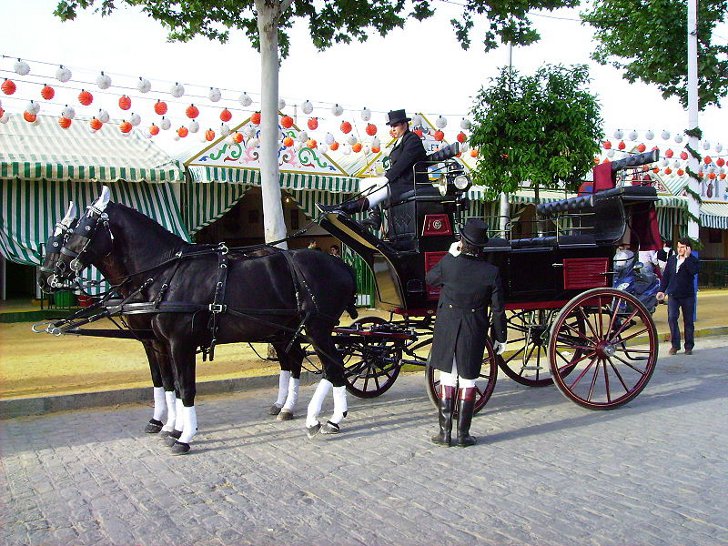The history of the Seville Fair dates back to 1847. That year, José María Ybarra and Narciso Bonaplata, two councilors born in northern Spain, proposed to organize a livestock fair in Seville. Queen Isabel II agreed to the proposal, and the inaugural Seville Fair was held on April 18, 1847 at the Prado de San Sebastian.
Since its inception, the fair has gradually transformed into an almost week-long festival that attracts thousands of attendees, locals and tourists alike. It officially begins at midnight on the third Monday after Easter and ends on the following Sunday. Many activities, however, kick off on the Saturday prior to the official opening.
Monday night of the Seville Fair is referred to as the night of the fish (la noche del pescaíto) due to the fact that fish is traditionally served for dinner. During the opening ceremony called alumbrao, the lights on the main entrance to the fair (portada) are turned on.
The fairgrounds (real de la feria) encompass 24 blocks located between Los Remedios and Tablada. They are covered in rows of casetas, decorated marquee tents set up by prominent families, trade associations, political parties, clubs and group of friends. Fair-goers wander from caseta to caseta, eat tapas, drink Andalusian wines and cocktails, dance Sevillanas and socialize. During the day, there are plenty of revelers in the streets, but as it grows late, partying is limited to the casetas.
The Seville Fair also features an amusement park named the Calle del Infierno (Hell Road), a circus, bullfighting at the Real Maestranza (a 12,000-capacity bullring), and the daily parade of carriages and riders. Many revelers are dressed up in traditional costumes, short jackets with tight trousers and boots for men and flamenco-style dresses for women.





